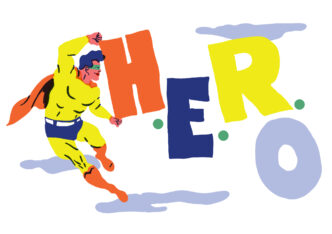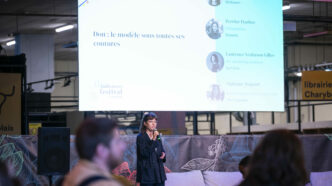
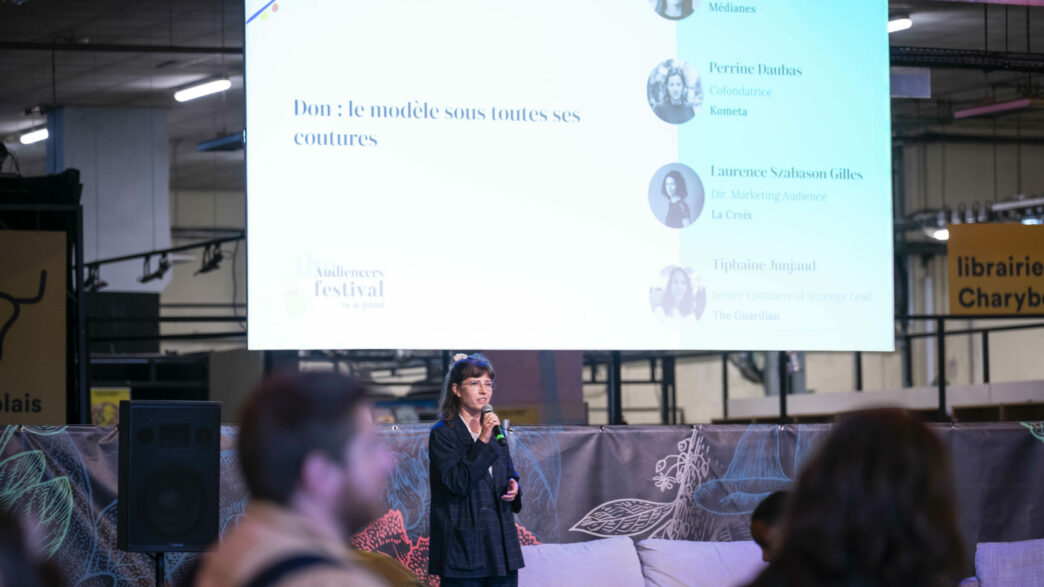
For a long time, donations were presented as a nice little extra source of income, reserved for radically committed media outlets, cannibalizing subscriptions, and condemned by the sociology of age. However, in France, as in several European countries, donations are experiencing unprecedented growth. They’re increasing turnover for both established and emerging publications, as well as attracting younger audiences.
So why is the media industry struggling to take donations seriously? Well, because of stubborn preconceptions and a lack of concrete examples…
From The Guardian to Vert, La Croix, StreetPress, and Kometa, here’s what the facts show when we lift the veil – a model that appeals to publishers, mobilizes new readers, and finances open, accountable journalism in the public interest.
At The Audiencers Festival in Paris, we explored the donation model with Médianes, a studio that helps media outlets strengthen their editorial, economic, and technical independence with a 360° approach. The round table brought The Guardian, La Croix, and Kometa together to discuss acquisition and conversion, followed by a workshop where Médianes shared best practices for campaigns, with use cases from Vert and StreetPress.
To share our insights beyond the Festival, here are eight common misconceptions about donations, debunked.
Misconception #1: “There’s no framework, nor advantage to a donation model.”
This is, of course, false. While donations have long been seen as a source of revenue that only works in countries with a strong philanthropic culture, this is no longer true today, and the French legal framework has contributed greatly to this change.
Since 2015, the “Charb amendment,” a provision adopted after the attack on Charlie Hebdo, has allowed political and general news media companies to receive tax-exempt donations through associations dedicated to press pluralism. In concrete terms, individuals can deduct 66% of their donation (up to a limit of 20% of taxable income); the organizations Presse & Pluralisme and J’aime l’info are responsible for collecting and tracking donations. This is a strong argument that puts France in an advantageous position compared to its European counterparts.
Misconception #2: “In France, donations are limited.”
This is no longer the case. As documented by La Revue des médias de l’INA, the J’aime l’info platform raised more than €7 million in 2024, compared to €5.1 million in 2023 and €1.8 million in 2020, with a trajectory that could exceed €10 million in 2025 or 2026.
In practice, donations can finance an entire model: for example, Reporterre, a pioneering media outlet in France, claims to be 98% donation-funded in 2024, up 30%. As detailed in their impact report, this represents €3.5 million, the result of donations from 45,821 donors, with 2 million unique visitors to its website and more than 180,000 subscribers to its newsletters. Another example is Vert, a new environmental media outlet launched in 2020, which announced that 90% of its revenue in 2024 would be funded by donations, with more than 12,000 financial supporters, more than 120,000 newsletter subscribers, and 340,000 followers on Instagram.
And they aren’t alone: on the investigative side, StreetPress, a media outlet specializing in the far right, reports 36% of its revenue coming from donations in 2023 and 77% growth in 2024. Disclose is approaching 60%, while Brittany-based Splann! has reached 75%.

Misconception #3: “Only activists are interested in donation models.”
The Guardian has been building its counterexample for the past decade. Without restricting access to its content, the publication is based on a clear vision: “Open to all, funded by many, beholden to no one.” The audience that supports it is not a self-perpetuating circle of activists, but a broad group of readers who defend the common good because they see its value. The nuance is essential: support does not come from a sense of belonging to a particular camp, but from a promise of public interest and a contract of trust.
The motivations put forward are consistent: protecting press freedom, preserving editorial independence, supporting investigation, recognizing the reliability and quality of the work, and holding the powerful to account.
The results speak for themselves: in ten years, revenue from digital readers has grown from around £5 million to £107 million. Now, 72% of the publication’s total revenue comes from digital sources (readers, advertisers, and other sources)—proof that a civic contract can become an economic pillar.
The base of regular supporters has reached approximately 1.3 million people, including more than 182,000 in Europe, with growth of around 20% over one year.
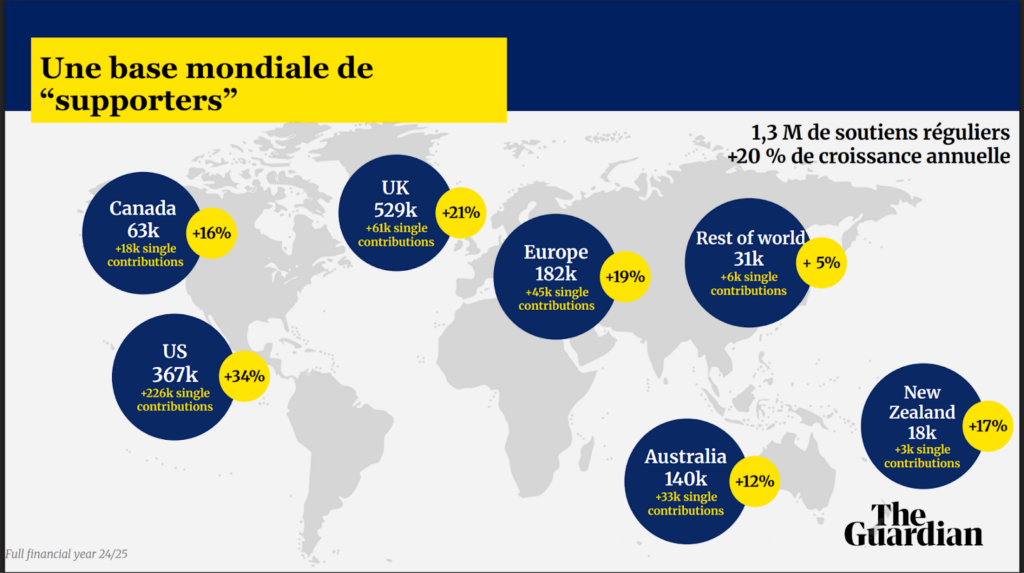
> Read about The Guardian’s reader revenue growth and proposition development
Misconception #4: “Donations cannibalize subscriptions.”
La Croix proves the opposite. The daily newspaper has opened a tax-exempt donation channel via Presse & Pluralisme, alongside its subscription offer.
- Subscriptions sell a service—convenience, apps, frictionless reading.
- Donations fund a mission—pluralism, solidarity formats, tool improvements, investigations.
At La Croix, 90% of donors are also subscribers: donations do not cancel out subscriptions, they add to them. Presented in this way, coexistence becomes natural and editorial balance clearer.
Since 2022, the Catholic daily newspaper has internalized fundraising and reworked its campaigns (targeting, media, messages). The model is gaining momentum and becoming established with a philanthropic approach, leading to the creation of a Philanthropy Manager position in 2024.
As a result, donations now account for 2% of revenue, with around 3,400 donors, most of whom give less than €500.
Misconception #5: “Donations only concern older audiences.”
This is changing thanks to the internet. While the median age of donors in France is 62, a growing number of young people aged 15 to 35 are now contributing financially to the media. Supporting content is part of their habits: online tips, support subscriptions, live fundraising. In other words, the gesture of “I support because it has social value” already exists; the media are getting better and better at activating it.
StreetPress, a free-access investigative media outlet celebrating its fifteenth anniversary, now derives more than a third of its revenue from donations. In its best months, its content reaches around six million people on social media and through newsletters, and nearly three-quarters of this audience is under 35. This requires campaigns to be designed differently: embodying faces and stories, linking donations to a specific format or project, and showing the impact in concrete terms.
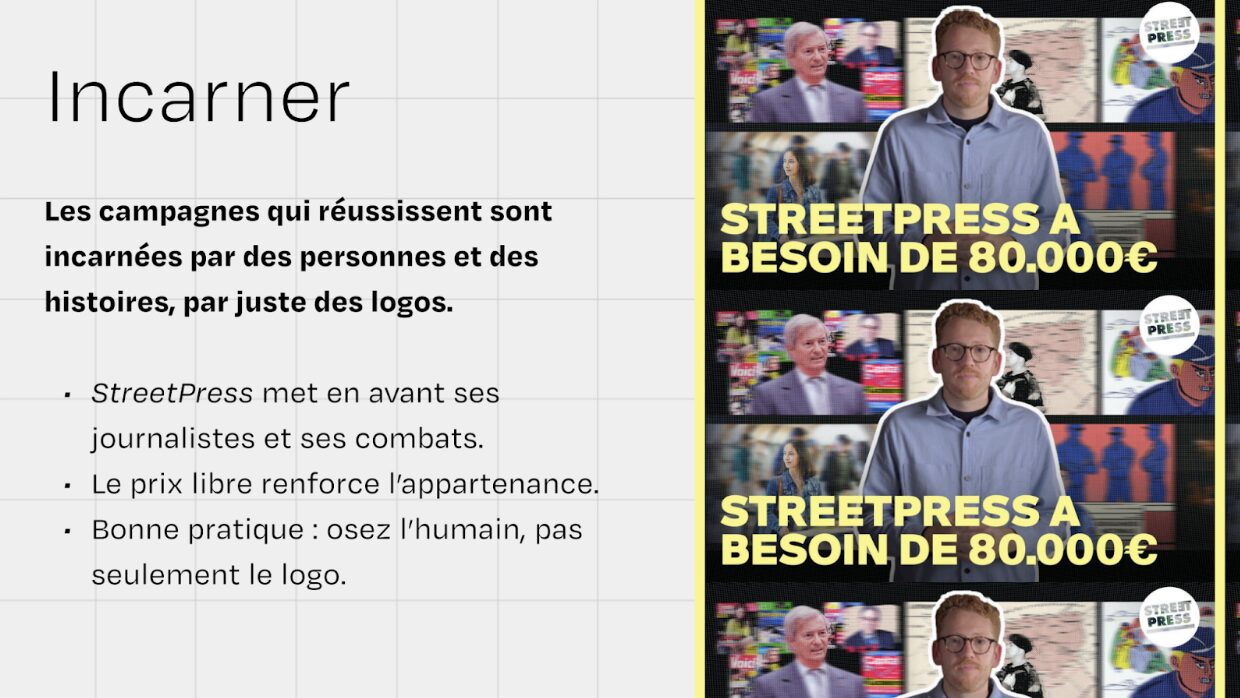
The result? After an initial campaign in 2021 that raised €75,000 to launch a newsletter dedicated to the far right, followed by €185,000 in 2023 to develop a collaborative platform on the same subject, StreetPress had gathered more than 6,000 regular donors within a club by 2025.
Misconception #6: “It’s just another source of funding.”
That would be a lot, but if donations work, it’s not just about money. It requires a clear editorial model, a coherent marketing strategy, and rigorous governance.
Vert is proof of this. The media outlet has turned donations into a clear editorial contract, funding open-access environmental journalism, and has translated this into a controlled conversion and loyalty process. The inserts are easy to understand, recurring donations are offered by default, and tax exemptions are explained without jargon. Conversion and follow-up messages are tailored to profiles and synchronized with current events. The relationship is maintained over time through concrete expressions of gratitude, behind-the-scenes insights, and impact reports.
This rigor pays off. In 2024, Vert finances 90% of its budget through donations, with more than 12,000 supporters. On the governance side, transparency is not just for show: reports are public and objectives are clearly stated. In other words, at Vert, donations do not simply add to the revenue stream: they guide the way we produce, explain, and report.
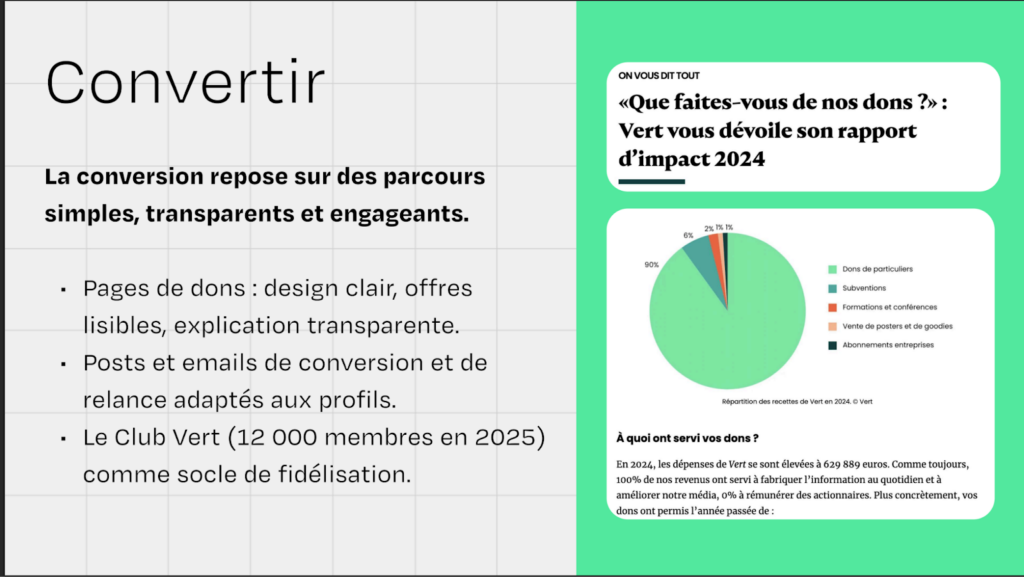
Misconception #7: “Donations are only small amounts.”
Editorial philanthropy exists, and it mainly finances time, which is the lifeblood of production.
Kometa, a media outlet dedicated to literary journalism, photo essays, and debates, is a prime example of this: beyond the fundraising that enabled the media outlet to launch in 2023, raising €760,000 from six investors, grants of €12,000 finance a year of work by authors in difficult fields, with a net cost to the patron of around €4,000 after tax relief. The mechanism is straightforward: a clear offer, symbolic rewards, follow-up, and often a round-table approach where one donor leads to others. It is therefore not just a matter of scattered micro-contributions, but also of major donations that can structure ambitious projects.
Result: in less than two years, the company collected €300,000 in donations, including individual donations, support from foundations, and a crowdfunding campaign.
Transparency note: Médianes, the studio, supported Kometa in its fundraising campaign in 2023.
Misconception #8: “Donations are a one-time thing.”
Recurring donations are becoming commonplace on both sides of the Channel, and even across the Atlantic. At Vert, the club requires a monthly donation for membership; most of its budget now comes from these recurring donations, which give the editorial team visibility.
At The Guardian, transforming one-off donators into regular supporters has become a discipline – “We thank donors, we explain, we give them a behind-the-scenes look, we follow up with substantive reasons, and we build a relationship.” This shift changes everything: cash flow is smoothed out, editorial planning becomes possible, and independence is better protected than it would be with sporadic donations.

Now what?
These cases prove it: donations work when you honestly say what they fund, when you show what they change, and when you agree to be accountable for them. They don’t replace subscriptions, they don’t conflict with advertising: they balance the whole by making it more readable. Guardian, La Croix, Vert, StreetPress, Kometa: they all tell the same story—a contract of trust forged with an audience that chooses to support a common good.
One requirement remains: consistency over time. A clear mission, genuine transparency, regular recurrence, and regular proof of public utility. This is the price that must be paid for donations to definitively move from prejudice to model.
Would you like to learn more about Médianes’ expertise in fundraising campaigns? Visit our website.





